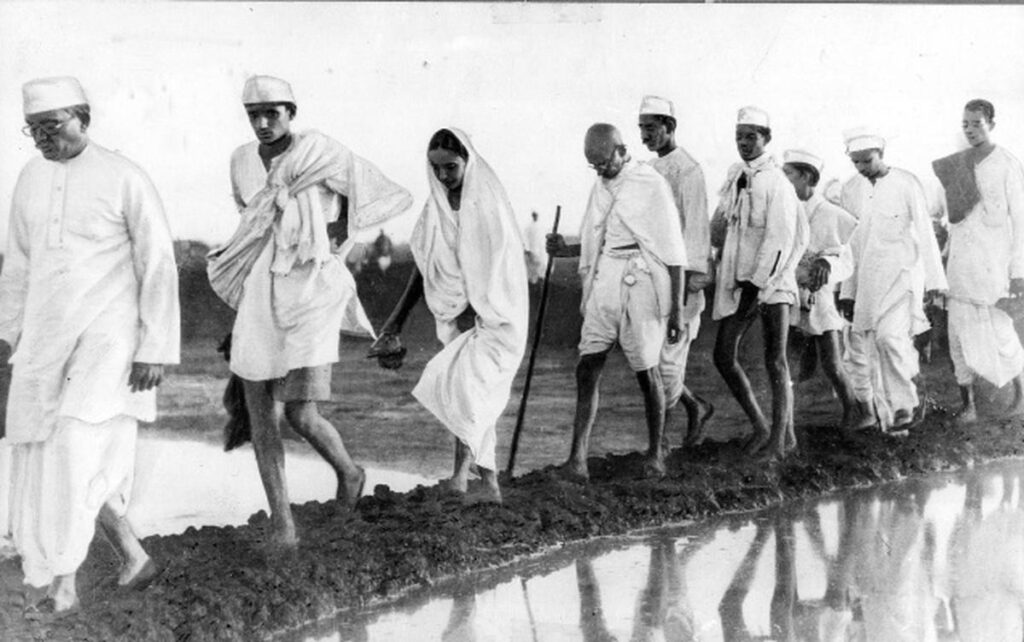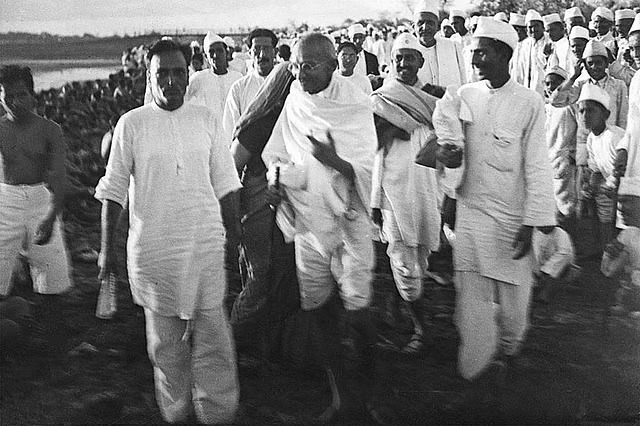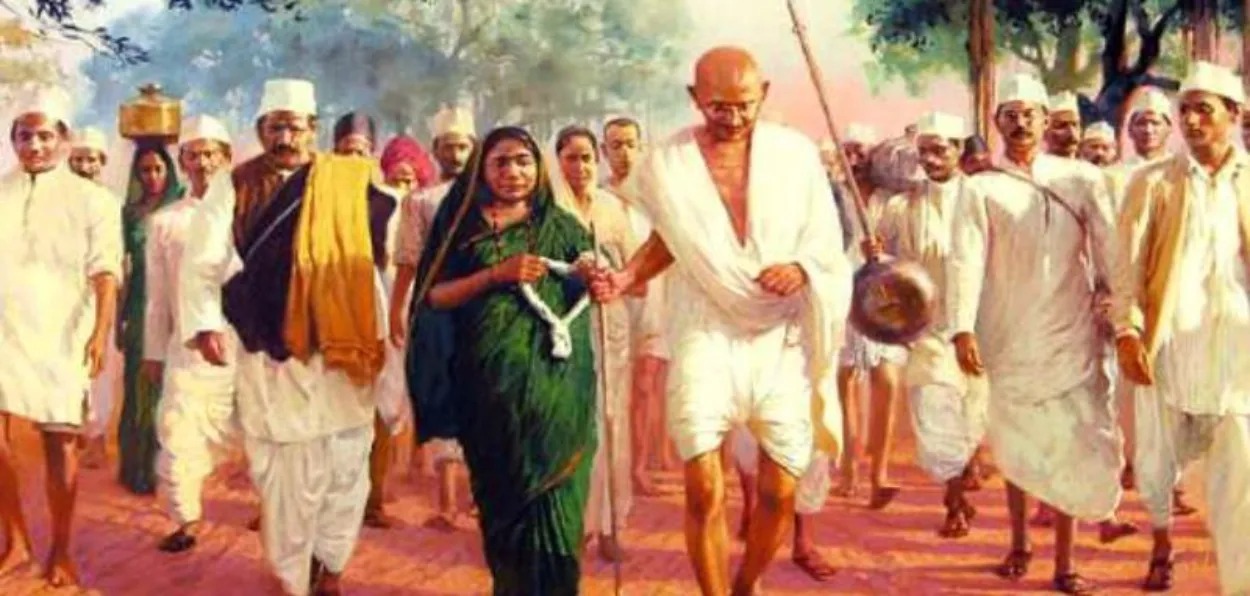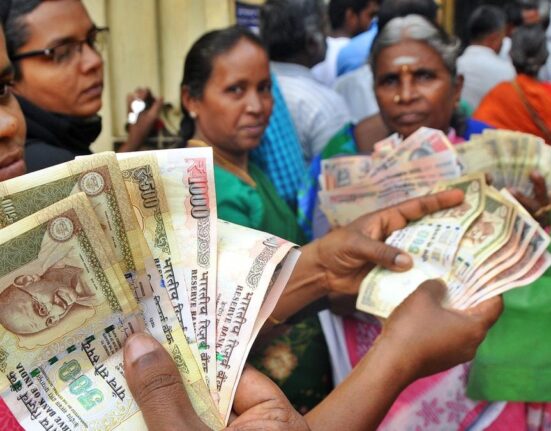परिचय
The Salt Satyagraha—popularly known as the Dandi March—was Mahatma Gandhi’s 24‑day, 240–387km nonviolent march from Sabarmati Ashram to the coastal village of Dandi in Gujarat from 12 March to 6 April 1930, launched to defy the British salt monopoly and inaugurate the Civil Disobedience Movement nationwide. At 8:30 a.m. on 6 April 1930, Gandhi picked up a lump of saline mud and produced salt, a symbolic breach that ignited mass, countrywide defiance of the salt laws and drew global attention to India’s freedom struggle.

Background: Why Salt, Why 1930
- Salt tax and monopoly: The British Raj enforced a state monopoly on the manufacture and sale of salt and taxed an item essential to every household; Gandhi chose salt to unite rich and poor in a “poor man’s struggle” against an unjust law.
- Political lead‑up: After the Lahore Congress’s declaration of Purna Swaraj, Gandhi sent Viceroy Lord Irwin a letter on 2 March 1930 warning he would march to the sea and make salt if core demands (including abolition of the salt tax) were ignored; with no concession forthcoming, the march was confirmed.
- Strategic intent: The march was designed as the dramatic opening of Civil Disobedience, to mobilize masses nonviolently and expose the moral bankruptcy of repressive laws before Indian and world opinion.
The March: Route, Discipline, and Mass Appeal (12 March–6 April 1930)
- Core column: Gandhi set out from Sabarmati with 78–80 selected satyagrahis at dawn on 12 March 1930, walking village to village, sleeping in the open, and addressing large crowds about the salt tax and swadeshi.
- Distance and path: Contemporary accounts record approximately 240–241 miles (about 385km) from Sabarmati to Dandi via 22 night halts across Gujarat, with steadily swelling participation along the route.
- Organization and messaging: Volunteers registered new satyagrahis, collected resignations from colonial officials, and coordinated boycotts of foreign cloth; Gandhi engaged Indian and foreign press daily, projecting the struggle internationally.
Breaking the Salt Law at Dandi (6 April 1930)
- Arrival and ceremony: Gandhi reached Dandi on 5 April and at daybreak on 6 April performed prayers, then stooped to pick up saline mud and evaporate it to make salt, openly violating the law; Sarojini Naidu, present at Dandi, hailed him as a “law‑breaker”.
- Call to the nation: Gandhi immediately urged Indians to make salt wherever possible and accept the risks of prosecution, framing a decentralized, mass satyagraha beyond one symbolic act.
Nationwide Civil Disobedience and Repression
- Mass spread: The breach at Dandi sparked millions to manufacture, sell, and buy contraband salt; salt satyagraha spread to Bombay, Karachi, and coastlines and inland centers, catalyzing boycotts and resignations.
- Arrests: The Raj arrested tens of thousands, including national leaders; over 60,000 people were jailed in the movement’s opening months as salt raids and picketing continued.
Dharasana Satyagraha and Gandhi’s Arrest
- Next objective: Gandhi announced a nonviolent raid on the Dharasana Salt Works, 40km south of Dandi, to sustain pressure; as before, he informed the viceroy of the plan and possible off‑ramps.
- Arrest: Gandhi was detained at midnight on 4–5 May 1930, just before the Dharasana action; Abbas Tyabji and Kasturbhai Gandhi were arrested when they tried to lead, and Sarojini Naidu then stepped in to guide the volunteers, keeping the satyagraha alive and in world headlines.
Key Demands and Political Outcomes (1930–1931)
- Eleven demands: Gandhi’s demands to Irwin in early 1930 included abolishing the salt tax, reducing land revenue, cutting military expenditure and officials’ salaries, tariff protection for Indian cloth, release of political prisoners, and other civil liberties and administrative reforms.
- Gandhi–Irwin Pact (5 March 1931): After months of mass civil disobedience and repression, Gandhi and the viceroy agreed to a truce: release of most political prisoners, withdrawal of repressive ordinances, and permission to make salt for personal use, in return for suspending the movement and Gandhi’s attendance at the Second Round Table Conference.
Significance
- Moral and strategic breakthrough: By choosing an everyday necessity, Gandhi fused ethical protest with political strategy, transforming civil disobedience into a mass, cross‑class movement and undercutting the legitimacy of colonial law.
- International spotlight: Coordinated media outreach and the spectacle of disciplined nonviolence delivered unprecedented global visibility to India’s cause; Dharasana and mass arrests intensified international criticism of British policy.
- Institutional concessions: Though limited, the 1931 pact acknowledged Congress as a negotiating counterpart and conceded the right to make salt for personal use, while freeing large numbers of prisoners and setting the stage for constitutional talks.
Key Dates and Timeline
- 2 March 1930: Gandhi’s letter to Viceroy Irwin outlines demands and warns of salt satyagraha if unmet.
- 12 March 1930: Dandi March begins from Sabarmati with 78–80 satyagrahis.
- 5–6 April 1930: Arrival at Dandi; Gandhi breaks the salt law at ~8:30 a.m. on 6 April.
- 24 April 1930: Gandhi announces planned Dharasana satyagraha to escalate nonviolent pressure.
- Night of 4–5 May 1930: Gandhi arrested before Dharasana action; leadership passes to Abbas Tyabji, then Sarojini Naidu after further arrests.
- 5 March 1931: Gandhi–Irwin Pact ends the first phase of Civil Disobedience and permits domestic salt manufacture for personal use.
Key Figures
- Mahatma Gandhi: Architect and leader of Salt Satyagraha and Civil Disobedience; led the Dandi March and strategic escalation toward Dharasana.
- Sarojini Naidu: Poet‑leader who helped lead Dharasana volunteers after arrests; publicly framed Gandhi’s Dandi act as deliberate law‑breaking in service of justice.
- Lord Irwin (Viceroy): Negotiated the 1931 pact with Gandhi, recognizing Congress’s leverage after mass satyagraha.
Interesting Facts
- “White Flowing River”: The march was dubbed this for the stream of khadi‑clad participants swelling behind Gandhi as he progressed through Gujarat’s villages.
- Numbers jailed: Contemporary tallies commonly cite more than 60,000 arrests in the opening months, reflecting the breadth of popular participation.
- Precision and ritual: Gandhi scripted the Dandi breach as a sacred, disciplined act—dawn prayers, sea bath, then the first pinch of salt—to fuse spiritual resolve with political defiance.

निष्कर्ष
The Salt Satyagraha transformed India’s struggle for independence by converting the abstract injustice of colonial rule into a simple, universal act of defiance against the salt tax, mobilizing millions in disciplined noncooperation and forcing the British state into high‑level negotiations within a year. From the first steps out of Sabarmati on 12 March to the first handful of salt at Dandi on 6 April, Gandhi’s march demonstrated how moral clarity, mass participation, and strategic nonviolence could erode an empire’s authority—and set the template for civil resistance worldwide.








इस बारे में प्रतिक्रिया दें